Introduction
Did you know that Paris welcomes over 30 million visitors annually, making it one of the most visited cities in the world? This staggering number isn’t surprising given the city’s enchanting blend of historic architecture, world-class museums, and unparalleled culinary experiences. Paris captures hearts with its iconic landmarks and hidden gems alike, offering something magical for every type of traveler.
Whether you’re planning your first visit to the City of Light or returning to discover more of its treasures, this comprehensive Paris travel guide will equip you with insider knowledge, practical tips, and curated recommendations to ensure your Parisian adventure exceeds all expectations. From navigating the metro system to finding the perfect croissant, we’ve covered everything you need to know about experiencing Paris like a seasoned traveler rather than a tourist.
Table of Contents
Top Attractions
Paris boasts an impressive collection of world-famous landmarks and cultural institutions that have defined the city for generations. While these popular sites deserve their reputation, knowing how to experience them optimally can transform your visit.
Eiffel Tower: More than just an iconic silhouette, the Eiffel Tower offers unmatched views of Paris. For fewer crowds, visit early morning (before 9 AM) or book tickets online to skip the main lines. The view from Trocadéro at sunrise presents a perfect photo opportunity with far fewer tourists.
Louvre Museum: Home to over 35,000 artworks spanning 9,000 years of human history, the Louvre requires strategy. Don’t attempt to see everything—focus on select collections that interest you most. Enter through the less crowded Porte des Lions entrance rather than the pyramid during peak hours, and visit Wednesday or Friday evenings when the museum stays open later.
Notre-Dame Cathedral: While still undergoing restoration after the 2019 fire, the exterior remains impressive. Visit the archaeological crypt beneath the cathedral plaza to learn about Paris’s ancient roots.
Montmartre & Sacré-Cœur: Escape the downtown bustle in this artistic hilltop neighborhood. Arrive early to enjoy Sacré-Cœur’s stunning views without crowds, then wander the charming streets where famous artists once lived. Skip the tourist-packed Place du Tertre and explore the quieter streets like Rue des Saules instead.
Seine River: A Seine cruise offers a unique perspective of Parisian landmarks. The evening “illuminations” cruises showcase the city when monuments are dramatically lit, though daytime cruises provide better photography opportunities.
Lesser-Known Gems: Balance the major attractions with hidden spots like Musée de l’Orangerie (featuring Monet’s Water Lilies in oval rooms specifically designed for them), Sainte-Chapelle’s breathtaking stained glass, and the atmospheric Père Lachaise Cemetery where cultural icons like Oscar Wilde, Jim Morrison, and Édith Piaf rest.
Best Time to Visit
Paris experiences distinct seasonal personalities, each offering unique advantages for visitors. Understanding these patterns helps ensure your experience aligns with your preferences and budget.
While each season has its own charm, many consider late spring or early fall the best time to visit Paris for mild weather and manageable crowds.
Spring (March to May): Perhaps the most enchanting season in Paris when temperatures range from 45°F to 68°F (7-20°C). Parks burst with colorful blooms, particularly at Jardin du Luxembourg and Jardin des Tuileries. April and May see fewer tourists than summer months while offering pleasant weather for walking tours. Spring rainfall averages 25 days across the season, so pack a lightweight raincoat.
Summer (June to August): Peak tourist season brings warm temperatures between 59°F and 77°F (15-25°C), occasionally reaching the 80s. Daylight extends until nearly 10 PM in June and July, maximizing sightseeing hours. However, hotel rates increase by approximately 30%, and popular attractions can have wait times exceeding two hours. Many Parisians vacation in August, so some local businesses close while tourist sites remain crowded.
Fall (September to November): A sweet spot for travelers seeking balance. September retains summer warmth with fewer crowds, while October showcases gorgeous autumn colors in Paris’s parks. November brings cooler weather (40°F to 55°F/4-13°C) but offers the lowest hotel rates outside winter. Cultural events flourish during this season, including Nuit Blanche (October) and major art exhibitions.
Winter (December to February): Paris’s low season sees temperatures between 35°F and 45°F (2-7°C). While daylight hours are shorter and rain more frequent, the tradeoff includes significantly reduced crowds at major attractions—often cutting wait times by more than half. December’s Christmas markets and decorations create a magical atmosphere, particularly along Champs-Élysées. January and February offer the year’s best accommodation deals with average rates 40% lower than summer prices.
Optimal Timing: For the ideal balance of pleasant weather, reasonable crowds, and good value, target the transition periods: late April to early June or September to early October.
With so many incredible things to do in Paris, from iconic landmarks to hidden neighborhood gems, it’s easy to create an itinerary that suits every kind of traveler.
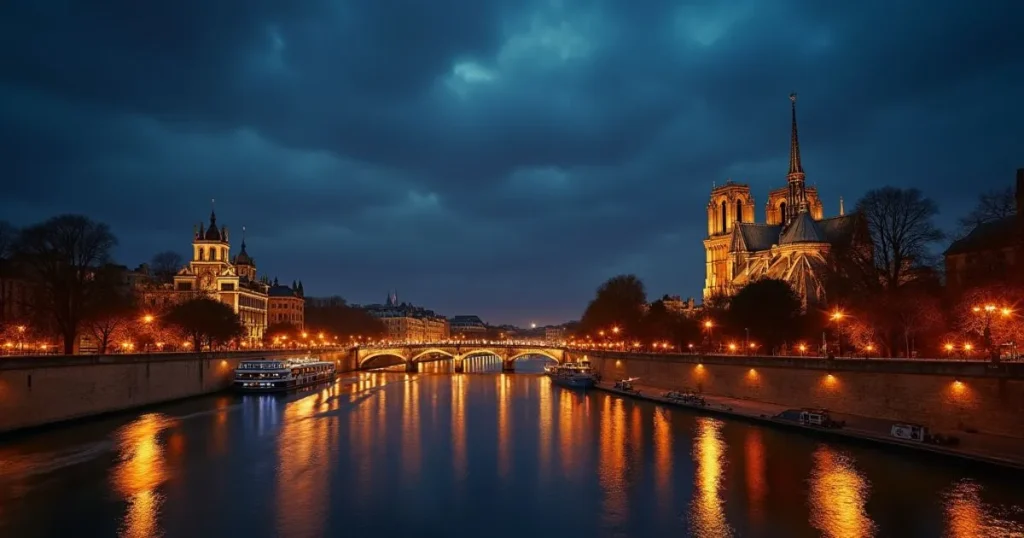
Itinerary Suggestions
3-Day Paris Itinerary
Day 1: Classic Paris Highlights
- Morning: Begin at the Eiffel Tower (8:30 AM opening time to avoid crowds), then stroll through the elegant Champ de Mars gardens.
- Midday: Cross the Seine to Trocadéro for the classic Eiffel Tower vista, then continue to Arc de Triomphe (climb to its rooftop for a spectacular city view).
- Afternoon: Explore the luxury shops and cafés of Champs-Élysées, ending at Place de la Concorde.
- Evening: Take a sunset Seine cruise (approximately 1 hour) followed by dinner in the lively Saint-Germain-des-Prés district.
Day 2: Art and Culture Immersion
- Morning: Visit the Louvre, focusing on key collections (arrive 30 minutes before opening).
- Midday: Enjoy lunch in the beautiful Tuileries Garden, then walk through to Place de la Concorde.
- Afternoon: Explore Musée d’Orsay’s impressive Impressionist collection housed in a former railway station.
- Evening: Discover the Latin Quarter’s winding medieval streets and lively atmosphere, perhaps enjoying dinner at a traditional bistro.
Day 3: Charming Neighborhoods
- Morning: Visit Sainte-Chapelle early, then explore Notre-Dame’s exterior and the charming Île Saint-Louis.
- Midday: Browse the distinctive bookshops and boutiques of Le Marais, stopping for lunch at a local café.
- Afternoon: Journey to Montmartre for spectacular city views from Sacré-Cœur, then wander its artistic streets.
- Evening: Experience dinner and perhaps a show in the vibrant Pigalle district, home to the famous Moulin Rouge.
One-Week Extension
For a longer stay, add these experiences:
- A day trip to Versailles Palace (avoid Tuesdays when Paris museums are closed but Versailles is open)
- Exploring the artistic legacy at Centre Pompidou
- Visiting the atmospheric Père Lachaise Cemetery
- Discovering the catacombs (book well in advance)
- A relaxing day in beautiful Jardin du Luxembourg
- Shopping at local markets like Rue Mouffetard or Marché des Enfants Rouges
- A dedicated food tour through a Parisian neighborhood
Local Culture & Tips
Understanding Parisian culture enhances your experience beyond mere sightseeing, allowing for meaningful connections with the city’s heart and soul.
Language Courtesy: While many Parisians speak English, beginning interactions with “Bonjour” (hello) and “Merci” (thank you) goes remarkably far. This simple courtesy often transforms the initial reception you’ll receive. According to a 2022 tourism survey, travelers who attempted basic French phrases reported 60% more positive interactions with locals.
Dining Etiquette: Parisian dining operates at a different pace than many visitors expect. Meals are meant to be savored rather than rushed. Waiters will not bring your check until you specifically request it (“L’addition, s’il vous plaît”) as rushing diners is considered rude. Tipping is not expected as service is included, though rounding up the bill as a small gesture is appreciated for exceptional service.
Café Culture: Paris’s café terraces are perfect for people-watching and absorbing local atmosphere. When ordering coffee, remember that “un café” is an espresso, while “un café crème” is closer to a latte. Taking your coffee at the bar rather than seated at a table can save you up to 50% on the price.
Metro Navigation: The Paris Metro system is extensive but intuitive once understood. Purchase a carnet of tickets (book of 10) for savings, or consider the Paris Visite travel pass for unlimited travel. The RATP app provides real-time navigation assistance. During rush hours (8-9:30 AM and 5:30-7 PM), consider alternative routes or walking if distances are reasonable.
Local Markets: Experience authentic Paris at neighborhood markets where locals shop. The Bastille market (Thursday and Sunday mornings) and Rue Mouffetard market (daily except Monday) showcase fresh produce, cheeses, and regional specialties. Engaging with vendors, pointing to what you’d like, and using simple French phrases creates memorable cultural exchanges.
Cultural Observations: Parisians value privacy and personal space more than visitors from some cultures. Speaking quietly in public places, particularly the metro, is appreciated. Fashion tends toward understated elegance rather than flashy styles—neutral colors and classic pieces help you blend in rather than stand out as a tourist.
Common Mistakes to Avoid
Even seasoned travelers can fall into common traps when visiting Paris. Being aware of these potential pitfalls will save you time, money, and frustration.
Overambitious Scheduling: Paris has over 130 museums and countless attractions, making it impossible to see everything in one visit. According to tourism data, first-time visitors who limit major attractions to 2-3 per day report 78% higher satisfaction with their experience. Build in time for spontaneous discoveries and relaxation at sidewalk cafés.
Dining Near Major Attractions: Restaurants within 500 meters of top landmarks typically charge 30-40% more while often serving lower quality food. Walk just a few blocks away from tourist areas to find authentic bistros where Parisians actually eat. Look for places with menus only in French and prix-fixe options—these typically offer better value and authenticity.
Transit Misjudgments: Relying solely on taxis or rideshares in Paris can quickly deplete your budget, with average fares running 3-4 times higher than public transportation. Conversely, trying to walk everywhere often leads to exhaustion—Paris is larger than it appears on maps. Balance walking in neighborhood clusters with strategic metro use for longer distances.
Security Oversights: Paris experiences targeted tourist scams like many popular destinations. Common techniques include the “petition scammer” approaching for signatures (while accomplices pickpocket you), the “gold ring” trick (someone “finds” a gold ring and offers to sell it to you), and various distraction techniques. Stay particularly alert at major tourist sites and train stations where 65% of reported incidents occur.
Weather Unpreparedness: Paris weather can be unpredictable, with sudden rainfall occurring approximately 15 days monthly, even during summer. Always carry a small umbrella or rain jacket, regardless of the forecast. Many travelers are also surprised by summer heat waves, as numerous small hotels and apartments lack air conditioning.
Museum Strategy Errors: Buying individual tickets at major museums often means waiting in multiple long lines. The Paris Museum Pass often pays for itself in time saved alone, allowing holders to skip ticket lines at over 50 attractions. Additionally, many visitors miss free entry opportunities: most national museums offer free admission on the first Sunday of each month, while under-26 EU residents enter for free year-round.
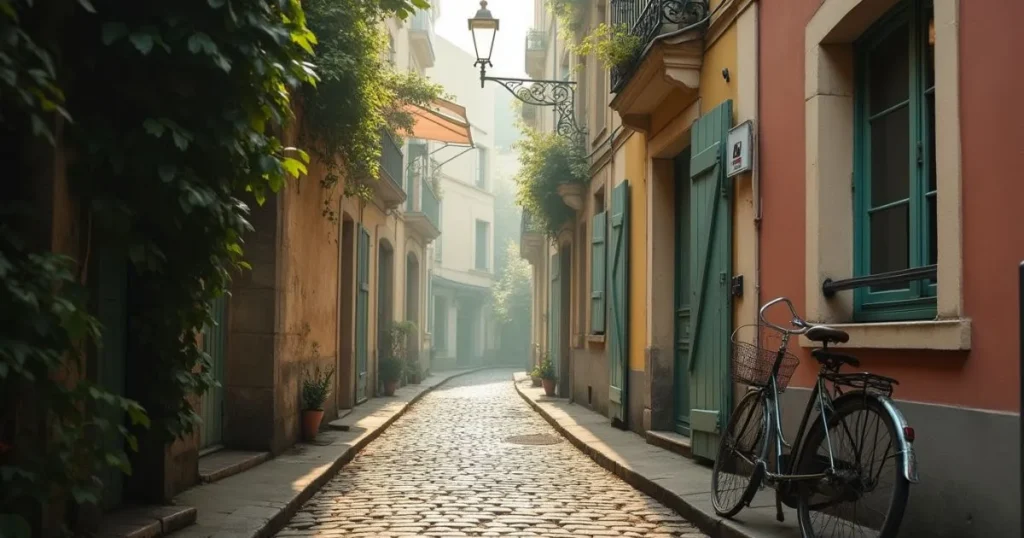
Budget & Costs
Paris accommodates various budget levels, though careful planning makes a significant difference in stretching your euros further.
Accommodation Costs:
- Budget: €80-120/night (hostels, budget hotels, or apartments in outer arrondissements)
- Mid-range: €120-250/night (comfortable hotels in central districts)
- Luxury: €250+/night (high-end hotels and boutique properties)
Staying in the 9th, 10th, 11th or 12th arrondissements often provides better value while remaining well-connected by metro. Accommodations booked 3-4 months in advance typically cost 15-25% less than last-minute bookings.
Food Expenses:
- Budget: €30-40/day (bakery breakfasts, set-menu lunches, picnic dinners)
- Moderate: €60-80/day (café breakfasts, bistro lunches, casual restaurant dinners)
- Gourmet: €120+/day (restaurant meals and specialty food experiences)
Money-saving strategies include embracing the prix-fixe menu options (often 30% cheaper than ordering à la carte), enjoying picnics in Paris’s beautiful parks, and having your main meal at lunch when many restaurants offer the same dishes at 20-40% less than dinner prices.
Transportation Costs:
- Single metro/bus tickets: €1.90 (€14.90 for a book of 10)
- Paris Visite travel pass: €12-38 depending on zones and duration
- Airport transfers: €10.30 (RER train) vs. €50-60 (taxi)
For stays longer than three days with significant sightseeing, a Navigo Découverte weekly pass (€22.80) covering Monday-Sunday offers excellent value if your stay aligns with this timeframe.
Attraction Expenses:
- Eiffel Tower: €18.10-28.30 depending on floor access and whether you take elevator or stairs
- Louvre Museum: €17
- Seine River Cruise: €15-20
- Paris Museum Pass: €52 (2 days), €66 (4 days), €78 (6 days)
The Museum Pass becomes cost-effective if you plan to visit more than 4-5 major attractions and provides the added benefit of skipping ticket lines.
Money-Saving Tips:
- Many museums offer free entry on the first Sunday of each month (though crowds increase significantly)
- Public drinking fountains throughout Paris provide safe drinking water—bring a reusable bottle
- “Happy hour” specials at bars typically run from 5-7 PM with drinks at half price
- Department stores like Galeries Lafayette offer 10% tourist discount cards upon request with your passport
- Free walking tours operate on tips-only basis (though €10-15 per person is customary if satisfied)
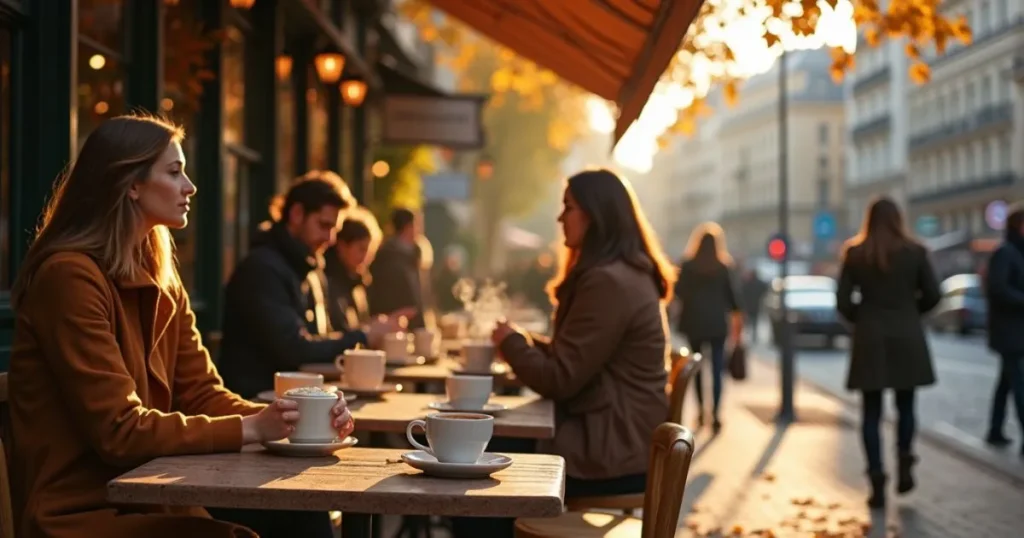
Packing & Preparation Tips
Packing appropriately for Paris enhances comfort while helping you blend in with locals rather than standing out as a tourist.
This Paris family travel guide is designed to help you plan stress-free adventures, with kid-friendly attractions, safety tips, and suggestions for family-approved dining.
Essential Documents:
- Valid passport (with at least six months validity beyond your stay)
- Travel insurance details
- Printed and digital copies of reservations
- International driving permit (if planning to drive)
- Credit cards with no foreign transaction fees (widely accepted in Paris)
- Small amount of euros for immediate needs upon arrival
Clothing Recommendations:
- Comfortable walking shoes (Parisians typically wear stylish but practical footwear)
- Layerable clothing for variable weather
- One smart-casual outfit for fine dining or evening entertainment
- Light rain jacket or compact umbrella (regardless of season)
- Adapter plugs for European outlets (France uses Type E plugs)
Technology & Connectivity:
- Unlocked smartphone (local SIM cards offer better value than international roaming)
- Portable battery pack (particularly useful for navigation and photography during full sightseeing days)
- Camera with extra memory cards
- Download essential apps before arrival: RATP (public transport), Citymapper (navigation), Google Translate, and La Fourchette (restaurant reservations)
Health & Comfort Items:
- Any prescription medications in original containers
- Basic first-aid supplies
- Comfortable daypack for sightseeing
- Reusable water bottle (Paris has excellent public drinking fountains)
- Eye mask and earplugs if sensitive to light or noise when sleeping
Preparation Checklist:
- Register for travel alerts with your country’s embassy
- Learn basic French phrases for greetings, ordering, and emergencies
- Inform your bank of travel dates to prevent card blocks
- Research metro routes from your accommodation to major attractions
- Download offline maps of Paris for navigation without data
- Book major attractions in advance, particularly Eiffel Tower, Louvre, and Catacombs
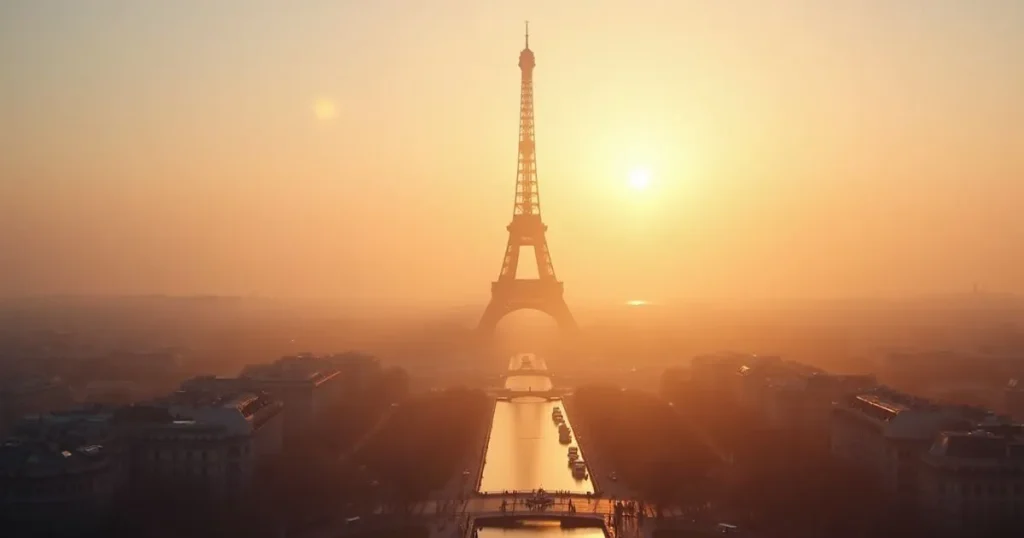
Planning your Paris trip? Don’t miss our guide to hidden gems in Paris for unique museums and experiences beyond the usual tourist spots.
If you’re traveling as a family, our Paris family travel guide is filled with kid-friendly tips and itinerary suggestions to make the most of your visit.
Budget-conscious travelers will appreciate our insights on budget travel in Paris and other affordable destinations, helping you enjoy the City of Light without overspending.
For practical preparation, be sure to check out our essential packing guide to make sure you’re travel-ready with the right gear and essentials.
And finally, travel is as much about the moments as the monuments—so don’t forget to read our guide on how to capture and preserve your travel memories for a truly meaningful Paris experience.
Conclusion
Paris rewards those who approach it with both curiosity and respect. Beyond the iconic landmarks that have drawn travelers for centuries, the true magic of this city lies in its everyday moments—morning light filtering through café windows, the perfect crunch of a fresh baguette, or stumbling upon a hidden garden nestled between historic buildings.
By balancing major attractions with neighborhood exploration, embracing local customs, and allowing yourself time to simply experience Paris rather than just checking sites off a list, you’ll discover why this city continues to capture hearts worldwide. The French have a beautiful concept called “flâneur”—one who wanders without purpose, observing and savoring the surroundings. Perhaps this is the ultimate way to experience Paris: with wonder, patience, and openness to the unexpected delights waiting around every corner.
Whether this is your first visit or a return journey, Paris offers endless layers to uncover. As Audrey Hepburn famously said, “Paris is always a good idea.” With the insights and recommendations from this guide, you’re well-equipped to make your Parisian adventure truly unforgettable.
Ready to start planning your Paris journey? Comment below with any questions, or share your own Paris tips and memories to help fellow travelers! And don’t forget to bookmark our other European destination guides for future travel inspiration.
If you’re looking to stretch your euros without sacrificing the experience, our budget travel Paris tips cover everything from free museums to affordable food spots.
FAQs
Is Paris safe for tourists?
Paris is generally safe for visitors, though standard urban precautions apply. Be particularly vigilant in crowded tourist areas and on public transportation where pickpocketing occurs most frequently. The city has increased security presence at major landmarks in recent years.
How many days do I need to explore Paris properly?
While you could see major highlights in 3 days, 5-7 days allows for a more relaxed pace and deeper exploration of neighborhoods beyond the main tourist circuit. This longer timeframe also accommodates potential day trips to Versailles, Giverny, or the Champagne region.
Do I need to speak French to visit Paris?
While you can navigate Paris speaking only English, learning basic French phrases significantly enhances your experience and interactions with locals. Simple greetings, please/thank you, and basic food-ordering vocabulary demonstrate respect for the culture.
What’s the best way to get around Paris?
The metro system is the most efficient way to travel longer distances, supplemented by walking within neighborhoods. Paris is more spread out than it appears on maps, so balancing public transportation with walking creates the optimal experience.
Are restaurants closed on certain days?
Many traditional Parisian restaurants close on Sundays and Mondays. It’s advisable to research operating hours for specific establishments you wish to visit and make reservations for dinner at recommended restaurants, particularly Thursday through Saturday.
What’s the tipping culture in Paris?
Service is included in restaurant bills by law (indicated by “service compris”). Additional tipping is not expected, though rounding up the bill or leaving a few euros for exceptional service is appreciated. For taxis, rounding up to the nearest euro is customary.
When do museums and attractions close in Paris?
Most museums close one day per week (often Monday or Tuesday) and on certain holidays. The Louvre closes on Tuesdays, while Versailles closes on Mondays. Many museums offer late-night openings one evening per week, providing a less crowded visiting experience.
Is the Paris Pass or Museum Pass worth purchasing?
This depends on your sightseeing intensity. The Museum Pass becomes cost-effective if you plan to visit at least 4-5 major museums or monuments and value skipping ticket lines. Calculate the individual entry costs for your planned attractions to determine if the pass offers savings for your specific itinerary.

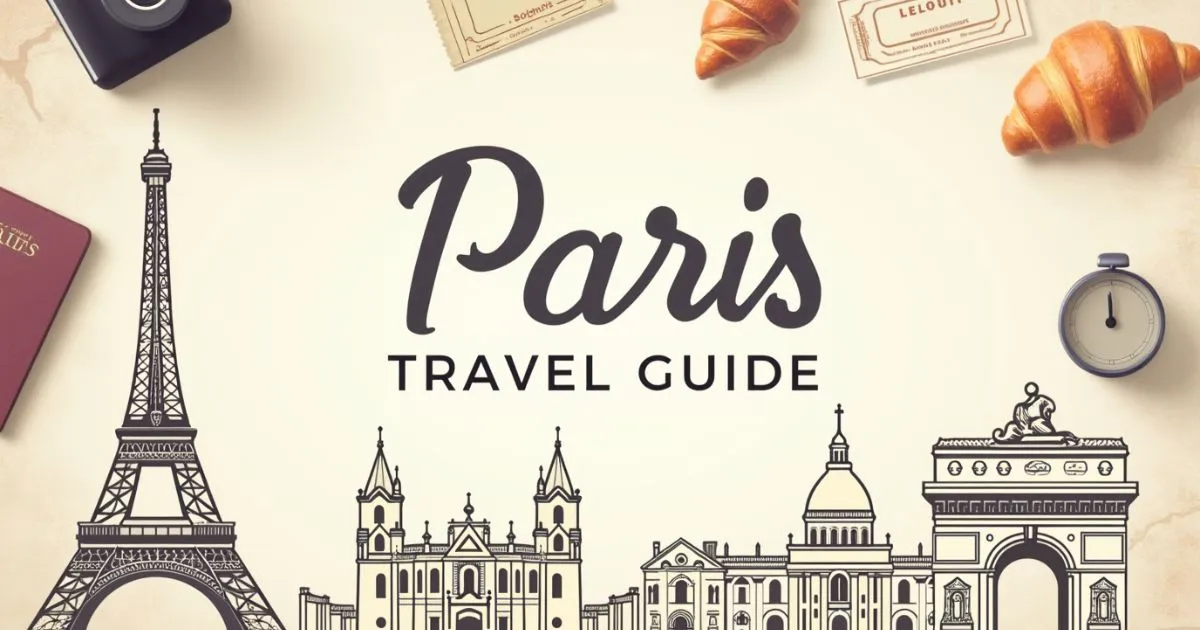
As someone who’s wandered through Paris more times than I can count, this guide is a collection of everything I wish I had known on my first visit, plus all the little discoveries I’ve made along the way. Whether you’re planning your dream trip or returning for another dose of Parisian charm, I hope this guide helps you experience the city with fresh eyes and deeper appreciation. Bon voyage!